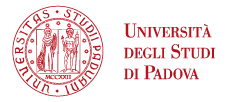
Goals, curricula and educational profiles
Goals
Research, technological development, and innovation are foundational objectives of the doctoral program. Within this framework, the topics addressed encompass those typical of civil engineering, environmental engineering, and architecture, understood in their broadest sense, with specific contributions from other disciplines aimed at providing, where necessary, mathematical and numerical support to the issues explored by doctoral students.
By the end of the doctoral program, the student must have developed the ability to independently conduct research activities, integrating knowledge from various engineering disciplines to solve complex problems that require diverse perspectives and interdisciplinary approaches. Furthermore, they must acquire analytical skills and critical thinking with regard to real-world mathematical-engineering situations and problems. The candidate must also be able to effectively communicate and disseminate results and methodologies to an international audience, both orally and in writing.
Additionally, the candidate is expected to develop the skills necessary for the formulation and management of research projects in national and international contexts, acquiring the tools and transversal competencies (soft skills) required to perform research work both individually and collaboratively.
Finally, the doctoral activities aim to foster an exploratory approach to research topics and the transfer of scientifically relevant and qualified outcomes to practical and applied contexts. This approach seeks to strengthen the connections between basic and applied research in the fields of civil, environmental, and architectural engineering, addressing societal priorities that demand the development of technologies, methods, and solutions with high innovative content.
Curricula and educational profiles
The doctoral program, characterized by a strong interdisciplinary approach, is organized into 2 curricula:
- 1. MATERIALS, STRUCTURES, COMPLEX SYSTEMS, AND ARCHITECTURE
- 2. RISK, VULNERABILITY, ENVIRONMENT, HEALTH, AND TERRITORY
Both curricula share a focus on technological innovation and the advancement of fundamental knowledge through theoretical, experimental, and computational approaches, with the development of mathematical and numerical models.
Each curriculum includes 3 educational profiles in which candidates can primarily, though not exclusively, align themselves:
Profiles for Curriculum 1 - MATERIALS, STRUCTURES, COMPLEX SYSTEMS, AND ARCHITECTURE
- 1. Numerical and constitutive modeling of complex systems.
- 2. Structures, infrastructures, construction, and transportation.
- 3. Architecture: history, design, urban, and territorial planning.
Profiles for Curriculum 2 - RISK, VULNERABILITY, ENVIRONMENT, HEALTH, AND TERRITORY
- 1. Environment and health.
- 2. Risk analysis, vulnerability, and territorial management.
- 3. Water engineering and fluid mechanics.





